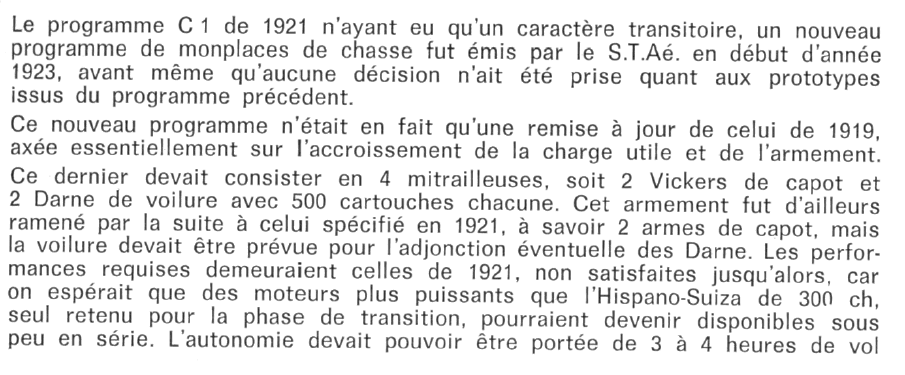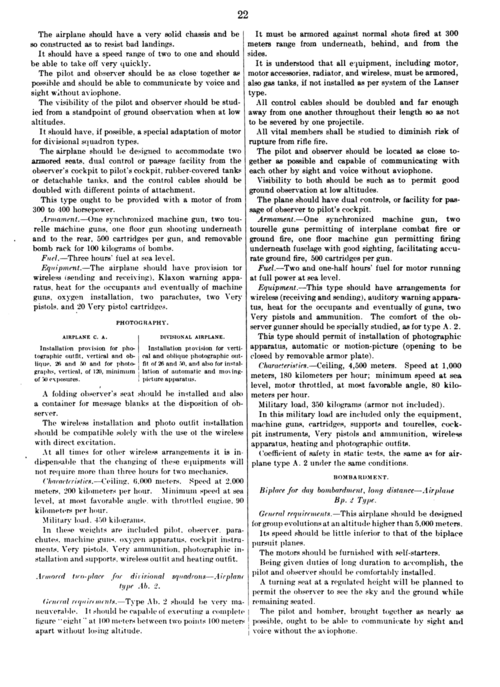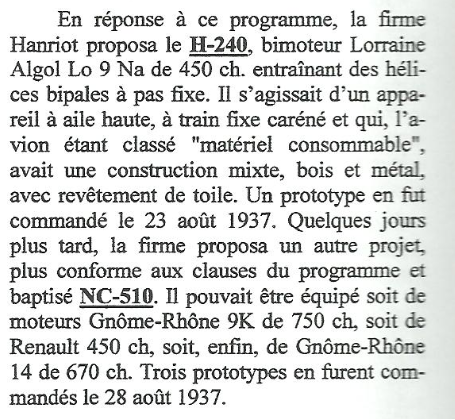I'm sorry to disturb you, has C.1 technical specification not been updated since 1921?
Of course it was changed;
As the 1921 C1 program had only a transitory character, a new single-seat fighter program was
issued by S.T.Aé. at the start of 1923, even before any decision had been taken on the prototypes
from the previous program.
This new program was in fact only an update of that of 1919, mainly focused on increasing the
payload and armament, which was to consist of 4 machine guns, i.e. 2 hood Vickers and 2 Wing
dinghy with 500 cartridges each. This armament was also subsequently reduced to that specified
in 1921, namely 2 hood weapons, but the wing had to be provided for the possible addition of
Darne. The required performances remained those of 1921, not satisfied until then, because it
was hoped that more powerful engines than the Hispano-Suiza of 300 hp, the only one chosen
for the transition phase, could soon become available in series. The range should be able to be
extended from 3 to 4 hours of flight at cruising speed. The fuel tanks were requested protected
and releasable or, failing this last point, with rapid emptying. Varying slightly according to the
maximum weight of the airplane, the static test coefficient had
been reduced to around 11. The planes of the program had to be able to be
used for photographic reconnaissance missions thanks to a device
semi-automatic type Duchatelier D 3.
Like its predecessors, the C 1 program of 1923 was favored by many
aircraft manufacturers whose projects, drawn up for the "competition" which was to begin
in September 1924, crowded the examination commission of the Technical Service.
Considering the fact that several of them did not make it past the stadium
draft, it is difficult to cite them all without risk of omission. The
The most significant devices are listed below, classified according to the type
of proposed engine:
















